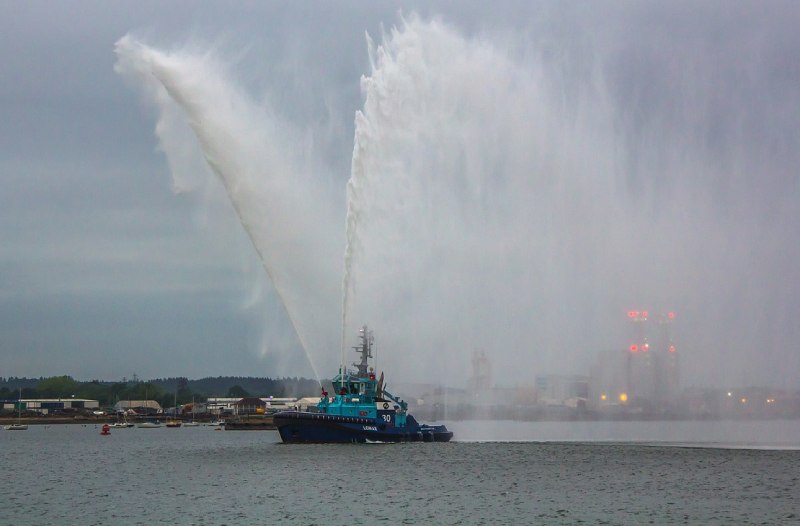Tugboats may be smaller than the ships they assist, but don’t let their size fool you. These robust vessels are crucial for guiding enormous ships through narrow spaces and bustling ports. However, there’s one tugboat habit that often catches people’s attention — spraying huge streams of water into the air.
Why would a boat built for heavy-duty work suddenly shoot water like a fountain? The sight of a tugboat blasting water might seem like an extravagant display, but there’s more to it than meets the eye. Some people assume it’s just for fun, while others think it’s a practical solution to a technical issue. The truth? It’s a fascinating mix of both.
In this article, we’ll dive into the surprising reasons behind this spectacle. From tradition and celebration to firefighting and safety, tugboats spray water for several unexpected and meaningful reasons that might surprise you.
What Are Tugboats Used For?

Tugboats are mostly designed to help maneuver large vessels that can’t move easily on their own. Their main role is to guide ships through narrow harbors, busy ports, and tricky waterways where maneuvering on their own would be difficult or dangerous. They help cargo ships, tankers, barges, and military vessels, guaranteeing their safe arrival and departure from ports.
When it comes to cruise ships, tugboats are used only in specific situations. Today’s cruise ships are equipped with Azipods, allowing them to move freely without outside help. Most also have bow and stern thrusters that let them move sideways or “parallel park” without assistance.
However, if strong winds or currents make docking risky, or if a port has specific safety regulations, tugboats are called in to assist. Cruise ports like Venice, for example, often require tugboats to prevent thrusters from disturbing the seabed.
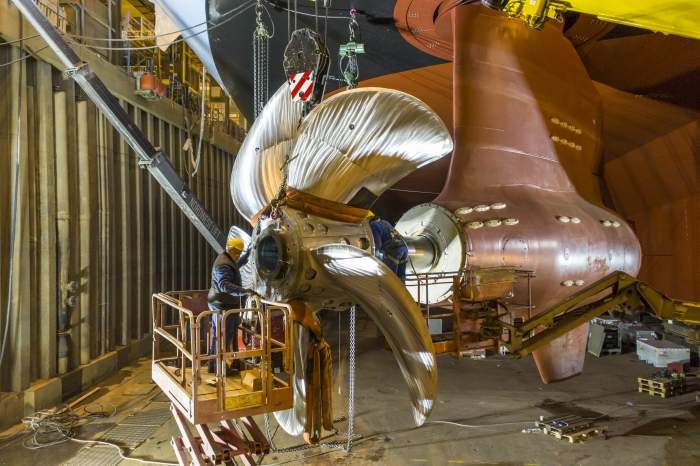
Photo from Royal Caribbean Press Center
Wind is the most common reason cruise ships might need tugboat assistance. Due to their large surface area, cruise ships act like massive sails, making it challenging to maneuver in high winds. Typically, cruise ships can dock safely on their own in winds up to 30-35 knots (55 to 64 kph), but if conditions exceed that limit, tugboats are brought in to ensure safety.
In contrast, other large vessels like cargo ships, oil tankers, and military ships rely heavily on tugboats for docking and maneuvering. These vessels often lack the maneuverability of modern cruise ships, making tugboats a regular part of their operations. For tankers carrying hazardous materials, tugboat assistance is crucial to avoid accidents.
Tugboats are also used during emergencies. If a large vessel loses power or experiences mechanical failure, tugboats help stabilize the situation by towing or pushing the ship to safety. Additionally, many tugboats are equipped with firefighting equipment to help in onboard fires or port emergencies.
The Surprising Reasons Tugboats Spray Water
Let’s take a look at some of the surprising reasons tugboats spray water:
Water Salutes: A Tradition with a Splash
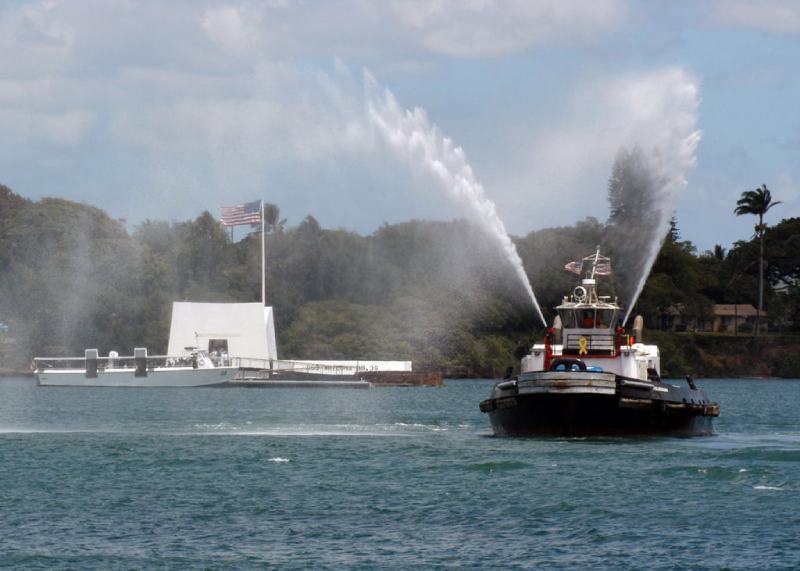
The main reason tugboats spray water is to perform what’s known as a water salute, a long-standing tradition at sea. Water salutes are typically used to mark significant moments, such as welcoming a ship on its maiden voyage, bidding farewell to a retiring vessel, or celebrating a historic journey.
The tradition of water salutes dates back to the mid-20th century, originally used by the U.S. Navy to honor departing military vessels. Today, water salutes can mark a ship’s first or final visit to a port, a captain’s retirement, the launch of a new cruise route, or the return of a ship after a historic voyage.
Surprisingly, this practice isn’t limited to ships — fire trucks at airports also perform water salutes to mark new airline routes or a pilot’s last flight. In ports, though, tugboats steal the spotlight, turning routine dockings into ceremonial displays.
Keeping the Bilges Clean: The Practical Reason
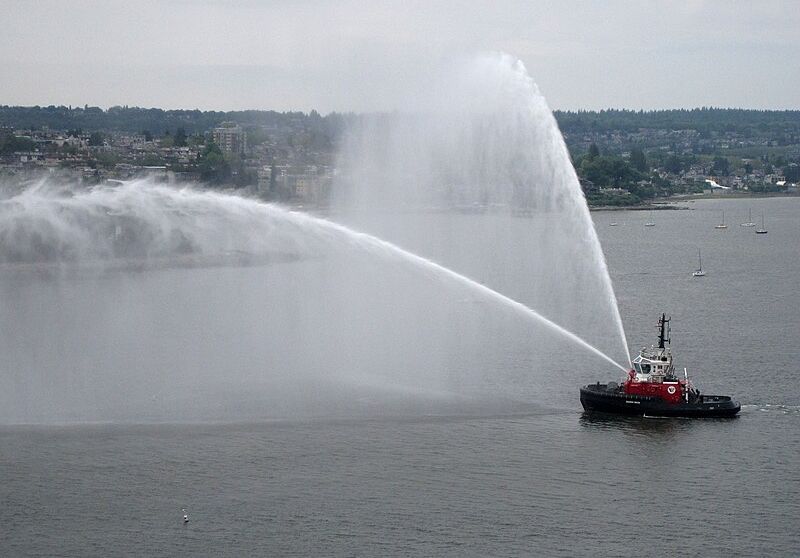
One practical reason tugboats spray water is to empty their bilges — the lowest part of the boat where excess water collects. Seawater can seep into the bilge through hull fittings, rainfall, or even deck washdowns. If left unchecked, this water can affect the tugboat’s stability and make it harder to maneuver, especially in rough conditions.
By spraying water through their pumps, tugboats release this accumulated water and keep their bilges clean. This practice helps prevent corrosion, reduce unnecessary weight, and avoid damage to onboard machinery. Without it, a tugboat could risk engine failure or even capsizing.
Cooling Engines and Improving Stability
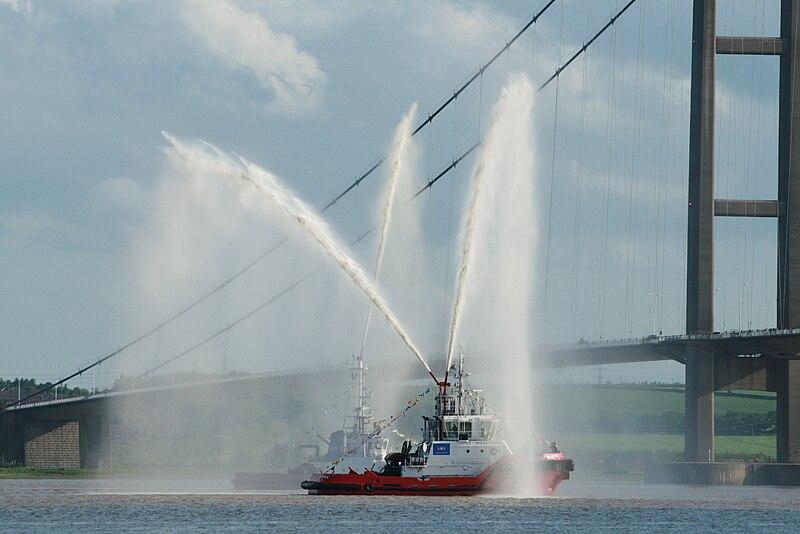
Tugboats work hard, and their engines generate a lot of heat. Sometimes, the reason why tugboats spray water is as part of the engine’s cooling mechanism. Seawater is pumped through the engine systems, keeping them cool during long operations. But once the cooling water does its job, it needs to be expelled — and that’s where the dramatic water sprays come in.
The sprays also help with stability. By creating a cushion of water around the tugboat, they reduce friction and help the vessel maintain balance when pushing or pulling massive ships. This added stability is especially important in tight spaces or rough waters.
Helping Stop Fires Before They Spread
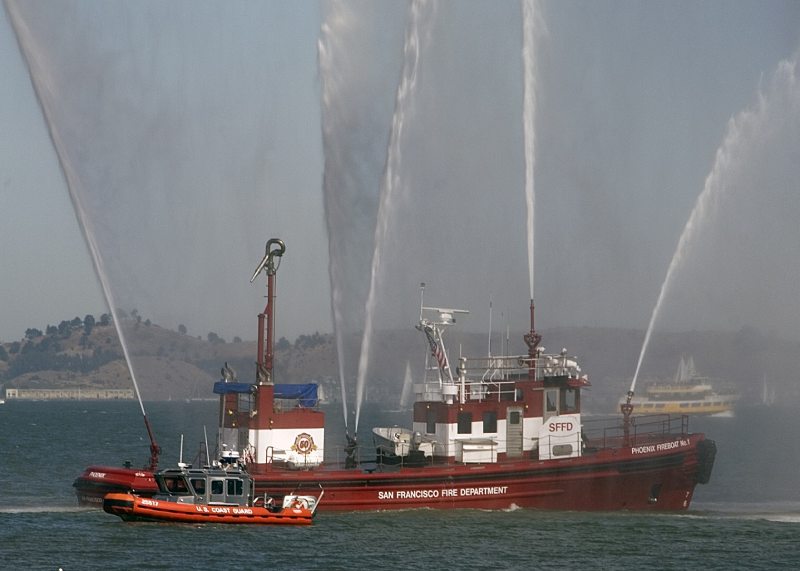
Tugboats are often the first line of defense in a port fire. Equipped with powerful water cannons, they can quickly spray large volumes of water to contain fires on nearby ships or docks. Their ability to get close to burning vessels makes them invaluable in preventing flames from spreading further, especially in crowded harbors.
These water cannons aren’t just for emergencies — they’re built into many tugboats as a standard feature. Ports need to be prepared for worst-case scenarios, and tugboats play a critical role in ensuring that any fire is dealt with swiftly before it becomes a full-scale disaster.
How Do Tugboats Manage to Pull Massive Ships?
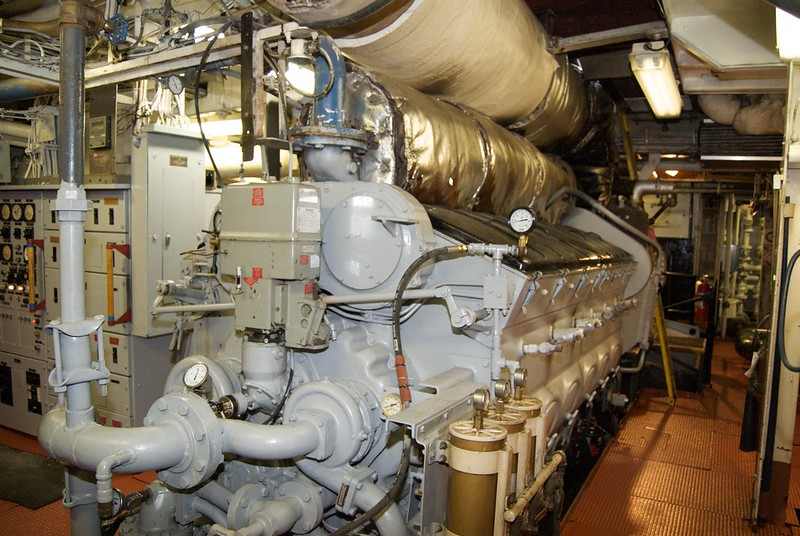
Photo by Pete Markham, Flickr
Tugboats may be small, but they pack a lot of power. Their secret lies in their engines, which are much more powerful than they appear for a boat of that size. Tugboats are equipped with high-horsepower engines that allow them to generate the force needed to push or pull enormous ships.
Another reason is that they are highly maneuverable, which is crucial in tight spaces like ports and narrow channels. Their compact size and strong engines make them ideal for assisting ships that can’t turn or stop easily on their own.
When a tugboat pulls a massive ship, it typically attaches a strong towline to the larger vessel. This line is made from highly durable materials that can withstand the intense strain of pulling such heavy loads.
Other articles:

